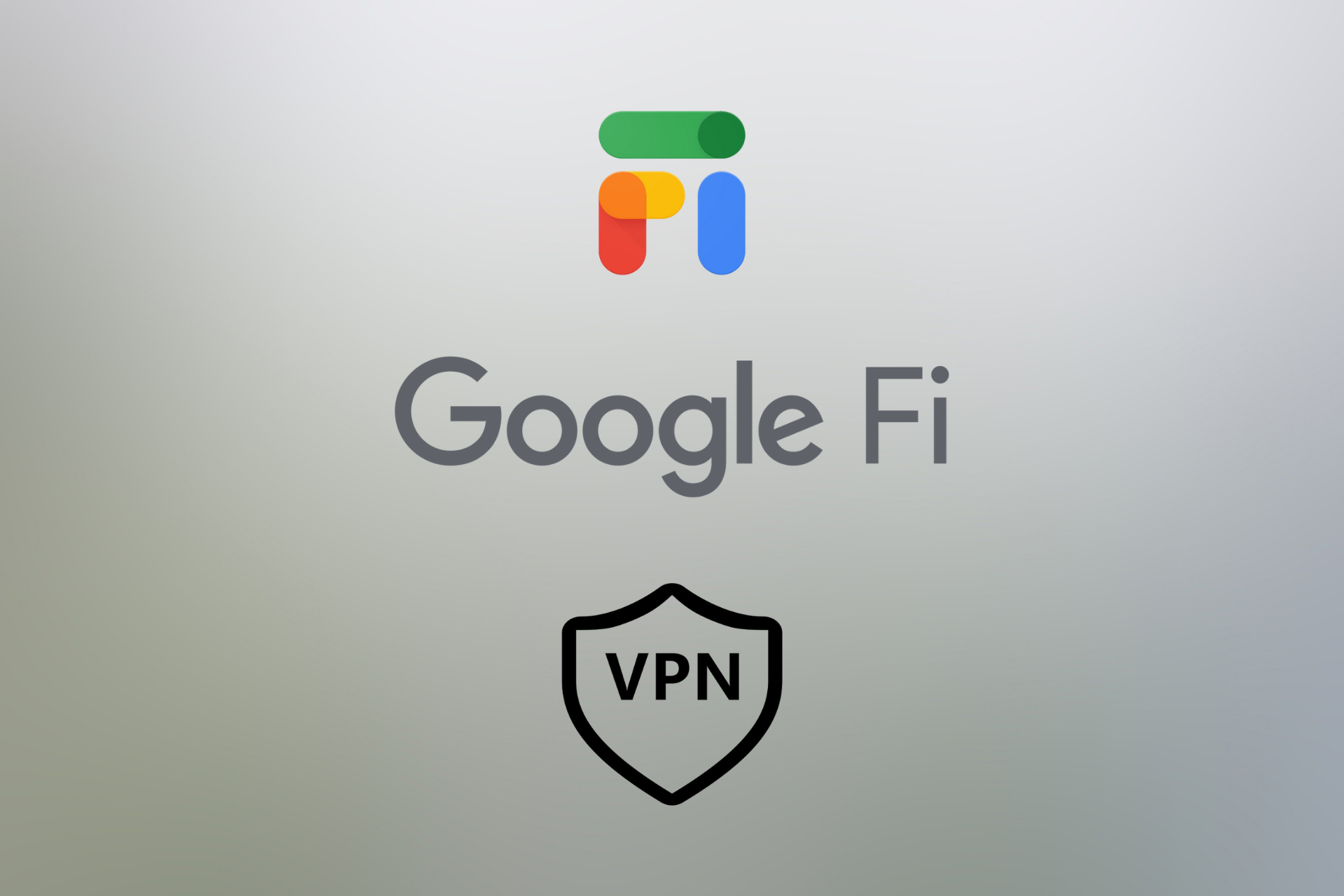Google Fi VPN Review - Is it Good Enough?
7 min. read
Updated on
Read our disclosure page to find out how can you help VPNCentral sustain the editorial team Read more

If you’re already a Google Fi subscriber or plan to get one, you should know that the service comes with a built-in VPN.
Google Fi is a mobile virtual network operator (MVNO) wireless telecommunications service that offers telephone calls, SMS, and mobile broadband.

Access content across the globe at the highest speed rate.
70% of our readers choose Private Internet Access
70% of our readers choose ExpressVPN

Browse the web from multiple devices with industry-standard security protocols.

Faster dedicated servers for specific actions (currently at summer discounts)
The service was launched in 2015 and is operated by Google. The Fi VPN is also available on all mobile devices compatible with Google Fi.
What is Google Fi VPN and how does it work?
Google Fi VPN is a feature that is built into the Google Fi app. It is similar to other VPN services on the market, with some exceptions.
Is Google Fi VPN free?
If you have an active Google Fi subscription, then you can enjoy the Fi VPN completely free of charge since it comes bundled with your phone plan.
On the one hand, this can be considered an advantage since you don’t need to pay for other third-party VPNs. On the other, the Fi VPN is pretty lightweight compared to other services.
Does Google Fi VPN work internationally?
Fi VPN is currently available in Austria, Belgium, Canada, Denmark, Faroe Islands, Finland, France, Germany, Greece, Iceland, Ireland, Italy, Mexico, the Netherlands, Norway, Portugal, Spain, Sweden, Switzerland, the UK, the US, the US Minor Outlying Islands, and the Virgin Islands.
In case your country is not on this list, this means that Fi VPN is currently unavailable in your location, and you’ll get a notification with regard to that.
Hides your IP address and location
The Fi VPN hides your original (ISP) IP address by replacing it with a new one coming from one of Google’s servers. The new IP address is neither connected nor linked to your Google account.
By changing your IP address, Google Fi VPN will also change your current location – which is based on your IP – to a location where the Google servers are based.
Therefore, when you access certain websites, apps, or other online resources, your current IP and location can no longer be tracked, which will ensure full digital anonymity.
Google Fi only records traffic metadata, such as speed, for 14 days. However, it does not record your IP address or online activity.
Encrypts your traffic and data
Besides ensuring online anonymity by changing and masking your current IP, the Fi VPN also encrypts all of your incoming and outgoing traffic.
In order to do so, it establishes an encryption tunnel between your device and the VPN server and redirects your traffic and sensitive data through it.
This strong encryption guarantees the utmost security and privacy, as no one – including your ISP – can see what you do or where you go online. Thus, all of your digital footprints will be gone.
As such, since third parties can’t intercept you anymore, VPN encryption will shield you from trackers, ISP monitoring, government surveillance, or various types of cyberattacks.
Doesn’t tie your online activity to your identity
When you enable Google Fi VPN, it uses a one-time token to establish a VPN connection. This token isn’t linked to your Google account or phone number.
More specifically, when you activate the VPN, Google Fi needs to check with one of its servers that you’re a valid user. After that, the server will send back a one-time token.
This is done only for the purpose of verifying that you may use the VPN. So, this token doesn’t have any information about you.
Given that the server used to check that you’re a valid user is different from the Fi VPN server to which you will connect, the latter only knows whether you can use the VPN or not, and therefore it can’t identify you.
Consequently, Google Fi VPN doesn’t tie your online activity to your identity, meaning that you will enjoy complete anonymity and privacy while using the VPN.
How do I configure the Google Fi VPN settings?
Below, we show you how to turn the Fi VPN on and off depending on the device you’re using. Before proceeding, make sure to check your device’s compatibility with Google Fi.
Enable Fi VPN on a phone that’s designed for Google FI
- Launch the Google Fi app on your device.
- Scroll down to Phone settings.
- Tap on Privacy & security.
- Turn Protect your online activity on.
- Now, you should be connected to the Fi VPN.
- If you want to disconnect, turn Protect your online activity off.
Enable Fi VPN on a phone that’s compatible with Google Fi
- Launch the Google Fi app on your device.
- Scroll down to Phone settings.
- Tap on Privacy & security.
- Turn Protect your online activity on.
- Now, you should be connected to the Fi VPN.
- If you want to disconnect, turn Protect your online activity off.
Enable Fi VPN on an iPhone
- Launch the Google Fi app on your device.
- Scroll down to Phone settings.
- Tap on Privacy & security.
- Turn Protect your online activity on.
- Tap Got it, then Allow.
- Enter the device passcode or fingerprint.
- Now, you should be connected to the Fi VPN on your iOS device.
- If you want to disconnect, turn Protect your online activity off.
Can I change my location on Google Fi VPN?
Unlike other standalone premium VPN services that let you choose between different VPN server locations, the Google Fi built-in VPN doesn’t allow server switching.
This means that no matter where you’re physically located, all of your traffic will be automatically routed to a US location when you connect to the Fi VPN.
This is a main disadvantage since it doesn’t allow you to bypass geo-blocking effectively. For instance, you can’t connect to a specific location in the US or a foreign country to access geo-restricted content.
Google Fi VPN – should I stick with it or choose another service?
If you’re a Google Fi subscriber, you can definitely use the Fi VPN for online protection, including anonymity, privacy, and security.
The VPN provides strong encryption that will keep snoopers and hackers away. Thus, it is very effective at protecting your sensitive data both at home and on public Wi-Fi.
However, it lacks many other important features that you can only find with other independent VPN services, such as ExpressVPN.
Also, if you want to stream content or access other sites and apps unavailable in your area, this isn’t the right option since it doesn’t let you change VPN servers.
Now let’s sum up the main strong and weak points Google Fi VPN has.
Pros
✅ Built-in (no extra fees)
✅ Strong encryption
✅ Split tunneling
✅ Easy configuration
Cons
❌ Doesn’t allow server changing
❌ No kill switch, multi-hop, or obfuscation
Given that it’s not the most popular name in the game, you may be wondering how good is Google Fi VPN, and that’s highly dependent on what you want from a VPN.
All in all, it’s a good option for data protection and encryption, but if you want to use a VPN to fight online censorship and circumvent geo-blocking, it’s not exactly the best option.
It automatically assigns you to a server and doesn’t let you change that, which can be really restricting. On the bright side, it’s safe and included in Google Fi without additional charges.
Finally, we hope this review will make you better understand what’s the purpose of Google Fi VPN. Also, the steps in the above setup guides should help you enable the VPN with ease.









User forum
0 messages